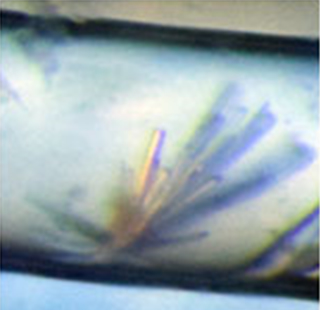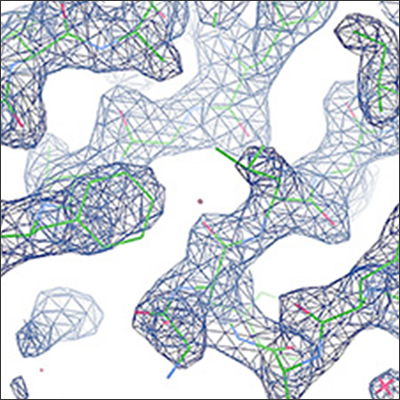Professor Takayoshi Kinoshita of the Graduate School of Science of Osaka Prefecture University and his group are currently trying to lead the structural information of kinase to development of medicine. The kinase structure was determined in the course of protein crystal growth on the Japanese Experiment Module, KIBO, on the International Space Station.
Kinase is an important protein (phosphoenzyme) that conveys intracellular information, regulating complex biological functions via cell growth, differentiation, and death of cells. MAP2K7, which was successfully crystallized in the space experiment on the KIBO, is a protein kinase that regulates stress and inflammatory responses and is an attractive drug target for several diseases including arthritis, cardiac hypertrophy, and hepatocarcinoma.
Intracellular proteins such as protein kinase are prone to aggregate and are not stably crystallized at the temperature of 20℃. Because of this, protein kinase was crystallized at 4℃. The experiment was launched in April 2016, resulting in acquiring single crystals (Figure 1).
From the space grown crystal, 1.3A resolution structure was successfully yielded for the first time (Figure 2). The best crystals yielded in ground experiments diffracted up to 2.1A, so the improvement in crystal quality was proven.
The detailed structural information provided novel insights for drug discovery such as the precisely assigned water molecules in the active site, the double conformations in the flexible region, and the inter-molecule interaction patterns of MAP2K7 molecules to each other. The results were published on a scientific journal Biochemical and Biophysical Research Communications 493 (2017) 313.
JAXA will continue to perform the protein crystal growth experiments at the temperature of 20℃ and 4℃ and contribute to the industrial world and scientists.

crystals obtained on the ground (comparative experiment)
(Source: Osaka Prefectural University/JAXA)
crystal obtained in space
(Source: Osaka Prefectural University/JAXA)
Figure 1. crystals of MAP2K7 kinase

2.1 A (on ground)

1.3 A (in space)
Figure 2. Electron density map obtained from a crystal grown on the ground (left) and from a crystal grown in space (right). High-resolution analysis revealed detailed information such as the position of water molecules bound to MAP2K7 molecules. (Source: Osaka Prefectural University)

